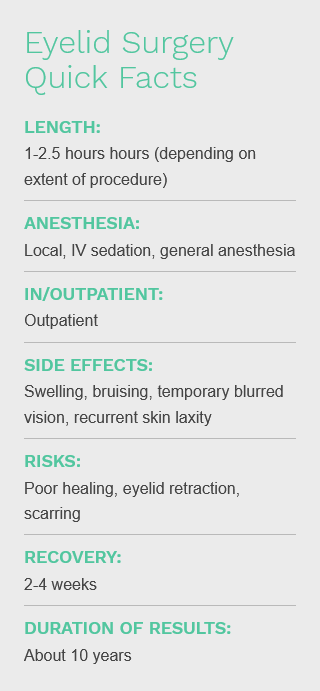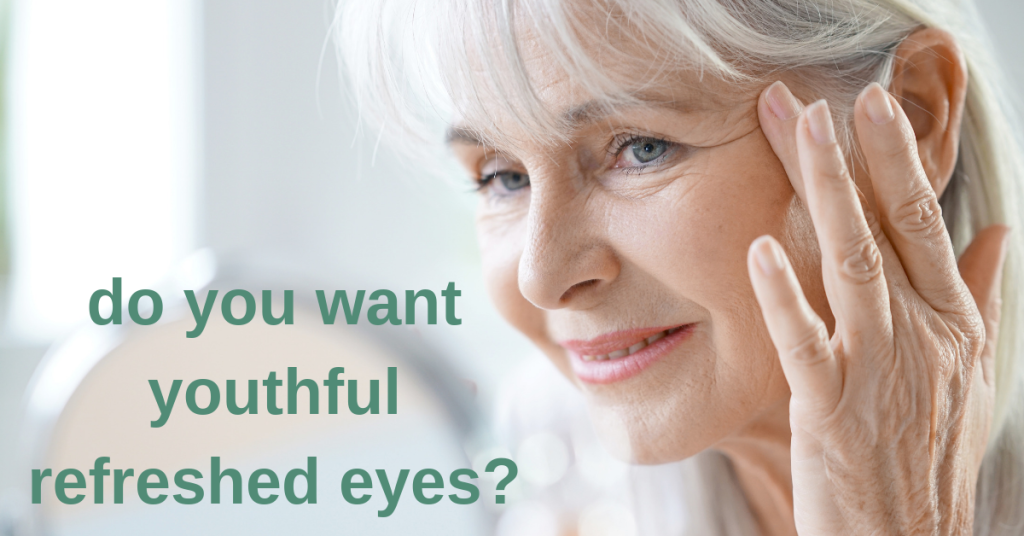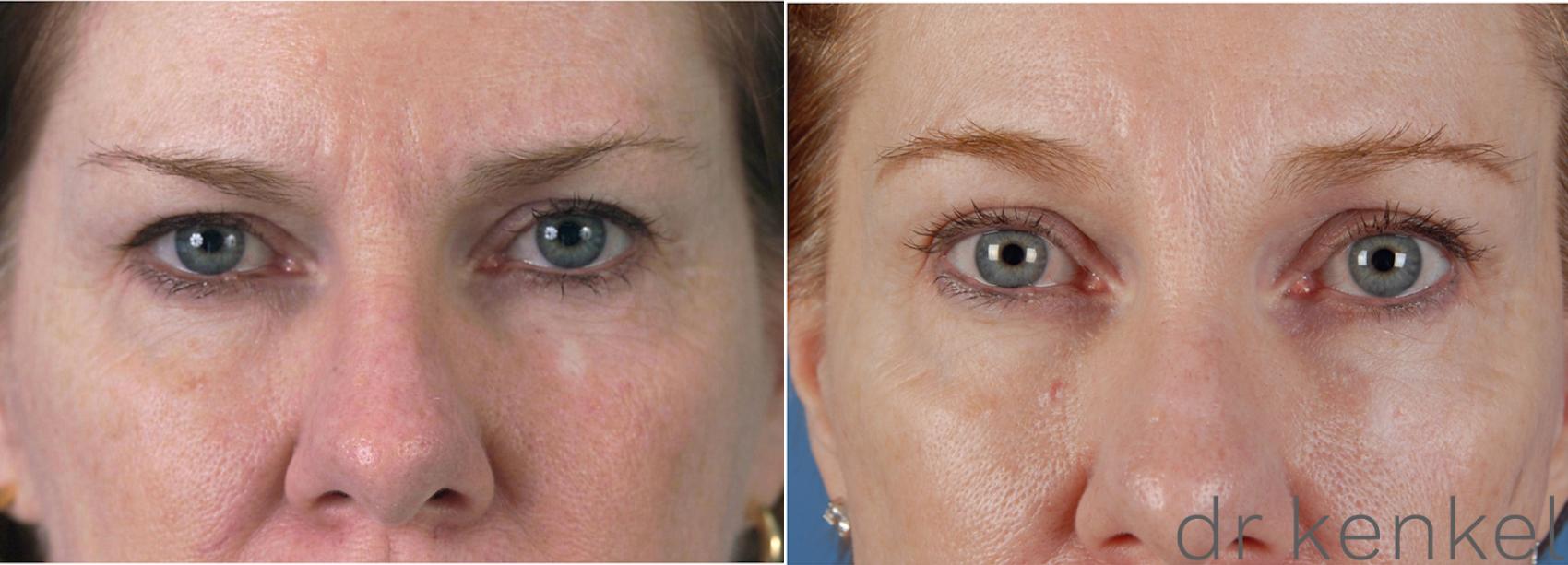Do you feel your hooded, sagging, or baggy eyelids make you look old and tired? You’re not alone. While the aging process affects us all differently, it is very common for patients to describe changes around the eyes as some of the first signs of aging. Fortunately, eyelid surgery (blepharoplasty) combats unwanted changes to the upper and lower eyelids. Keep reading to better understand eyelid aging treatment and view our blepharoplasty before and after photos depicting real patient transformations.
What Causes Dark Circles Under the Eyes?
Many factors contribute to the onset of dark circles under the eyes and other common eyelid aging symptoms. These may include genetic factors that predispose you to thinner skin under the eyes, lifestyle habits such as poor dehydration and sleep, and environmental factors such as too much sun exposure. Other contributors to eyelid aging, in general, may include weight fluctuations, the type and quality of your skin, and even the presence of allergies. Many of these things we simply cannot control. However, we can influence some factors by avoiding sun exposure and maintaining a stable weight and healthy lifestyle.
Common Upper Eyelid Problems Treated With Blepharoplasty
The upper lids get heavier with time for a number of reasons:
- Increase in skin: During the aging process, the skin loses its elasticity. We often think of this as it relates to the face or even our bodies. It also changes the characteristics of our eyelid skin, causing more redundancy of our upper lids. If severe enough, this laxity may even affect our vision, particularly in the upward and outward gaze.
- Deflation or loss of fat: We tend to lose fat in certain areas of the face as we grow older. The area around the eyes, particularly in the brow region, can become deflated, resulting in a lowering of the brow position and increasing the fullness in the upper lid.
- The presence of fat: As our skin loses its elasticity and thins, fat may become more noticeable, particularly in the inner aspect of our upper eyelid, creating fullness or puffiness there.
How Do Lower Eyelids Change?
The lower eyelids are a bit more complex than the upper lids, with several factors often contributing to the aging process. During our examination, each of these factors is carefully analyzed to determine which is present and can be addressed with eyelid surgery:
- Increase in skin: Like the upper eyelids, the lower eyelid skin can lose its elasticity and become redundant. This can give us “crepe-like skin” with fine lines or simply extra skin. The degree and type of skin excess help us determine whether surgical excision or a laser would be best used for correction.
- Baggy eyelids: The lower eyelids are often described as “baggy” as we age. There are a few reasons for this. First, we have fat that helps cushion our eye and protect it. With time, the thick membrane that supports it becomes thinner and more attenuated. This results in the visibility of the fat supporting the lower part of our eye. Additionally, we tend to lose fat along the eye socket bone, making the fullness of the lower eyelid even more noticeable. This results in an elongated appearance of the lower eyelid, highlighting the aging process.
- Dark circles: Many patients wonder how to get rid of dark circles that make them appear more tired than they feel. Loss of fat along the bone of our eye can create a “hollow” appearance, resulting in shadowing and a tired appearance. As discussed above, genetic, lifestyle, and environmental factors also contribute to dark under eye circles.
Is Eyelid Surgery the Best Option?

As a leading Dallas plastic surgeon, I carefully analyze your eyes and aging symptoms before developing a treatment plan customized to your unique needs. Here are a few examples of popular, effective treatment options:
1) Loss of volume in the eye region: In younger patients, particularly, this may be the first sign of aging. Despite having good quality skin and a lack of redundancy, they may still appear older than desired. In this case, fillers can help restore lost volume; and in this region may even last a year or more. Injections are done in the office under a topical anesthetic and have minimal downtime.
2) Skin redundancy and excess fat: These symptoms usually require a more aggressive surgical approach. The one exception would be crepe-like skin of the lower eyelid, which can be addressed in the office with a laser skin resurfacing treatment.
3) Dark circles under the eye: The treatment varies with the cause. Pigmentation can be addressed with topicals or laser treatments. Lasers can also treat blood vessels in this area, and you can learn more about these treatments in this related blog post. Volume loss resulting in shadowing can be treated with fat or filler products.
Changes in the upper and lower eyelids are the first visible signs of aging for most patients. Remember: These changes are very patient-specific and require a detailed analysis to determine the correct procedure for each patient. You may benefit from upper blepharoplasty or lower blepharoplasty as stand-alone treatments, or a combined approach may best address your needs.
There are no “cookie-cutter” approaches to cosmetic surgery; rather, a tailored and specific plan is put forth after a detailed consultation. Make sure you do your homework and see a board-certified plastic surgeon.
If you’re ready to look and feel your best, request a consultation online or call us at (214) 645-3112 to schedule an appointment.
This blog post was originally published in August 2019 and updated in July 2024.













Leave a Reply